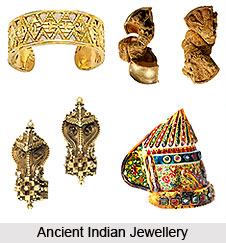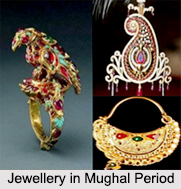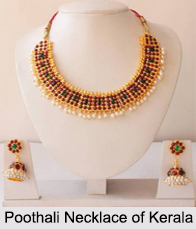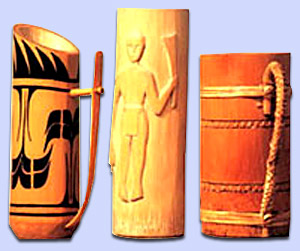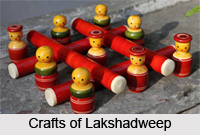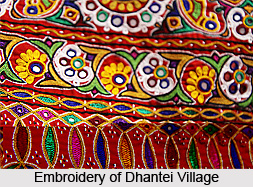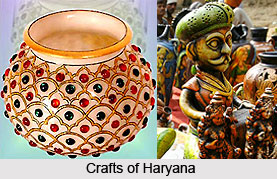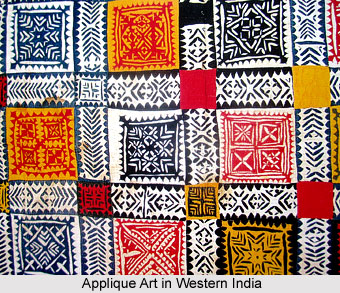 Applique Art of Western highlights the appliqu‚ art of the western based regions like Rajasthan. Marwari community of Rajasthan is traditionally and perennially engaged in the domain of Applique art which is attuned to the path work of Kathiawar the `Katab`.
Applique Art of Western highlights the appliqu‚ art of the western based regions like Rajasthan. Marwari community of Rajasthan is traditionally and perennially engaged in the domain of Applique art which is attuned to the path work of Kathiawar the `Katab`.
In Rajasthan, `Applique` is sometimes combined with embroidery to give a magical style of decoration which is done on almost all things such as clothes, bed sheets, lampshades and wall hangings. The two notable `Applique` works of Rajasthan are `Gota` and `Kinari work golden and silver coloured pieces respectively which is sewn on the cloth that are generally crafted by the Muslim craftsmen. In `gota` work, the embroidery is made on a velvet cloth, which gives it a unique look. The `gota` work uses the `Applique` works in both the classical and folk designs. The `gota` work is mainly done on the costumes for women, Khandela in Shekhawati mainly prepares these items.
For this mill made medium weight white cotton cloth forms the base on which patches of various tints, shades, sizes and shapes are arranged in a pictorial pattern to be later trimmed, slip stitched, whipped sometimes and finished with running stitch and button hole. Now commercialized the art has been prevalent in Jaipur Udaipur and Barmer district.
The quilts made by patchwork known as `Ralli` are the traditional products of Jaisalmer, which is made by sewing several layers of old fabrics , where the upper layer is made of new cotton cloth. The colors used for patch work are olive green, brown, maroon and black. The corners are decorated with tassels of either cotton or silk and Sequins called `Phuladi. `Naval cholies, saddle cloth, bed spreads; cushion covers and purses some of the products decorated by Jaisalmer Appliqu‚ art.
Preparing geometrical models from square shaped coloured textile pieces in which dark earthy colours are used generally makes `Applique`. This is mainly done on quilts, known as `rallis`.
`Applique` work of Rajasthan is mainly done on fabric which is stunning red, purple, and yellow, black, green and white. The base is shaped in a square, rectangular and circle or even in oval forms sometimes. This works as the background for that art piece. The `Applique` motifs of contrasting colours are then cut into various shapes like that of animals, birds, flowers, leaves celestial bodies and geometric shapes. These variously shaped motifs are now stitched on the base cloths in artistic ways.
Giving several folds makes raised motifs of the `Applique`. The intricate stitches such as bakhia, guntha, turpa, chikan and other embroidery techniques are the main elegant part of the `Applique` artwork. Recently, the use of small and bright mirror pieces has become popular in Rajasthan.
Applique work in the western India is a family affair. In Rajasthan, while preparing an `Applique`, the family gets involved. Those who are more experienced in the family do the intricate designs and the younger and less experience ones do the stitching of the borders and make the base clothes. The `Applique` finds its usage in daily use items also like bags, lampshades and tablemats. It is also done on blouses, petticoats, gowns and other garments. The Barmer `Applique` is generally traditionally sewn on bedspreads of black and brown bases while the motifs are of natural scenes; which give variations to the work. In Rajasthan, women of six villages prepare these `Appliques`.
